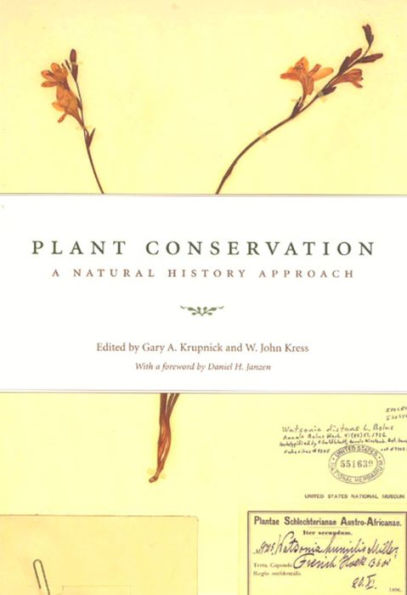Plant Conservation: A Natural History Approach
Natural history has always been the foundation of conservation biology. For centuries, botanists collected specimens in the field to understand plant diversity; now that many habitats are threatened, botanists have turned their focus to conservation, and, increasingly, they look to the collections of museums, herbaria, and botanical gardens for insight on developing informed management programs. Plant Conservation explores the value of these collections in light of contemporary biodiversity studies.
Plant Conservation opens with a broad view of plant biodiversity and then considers evolutionary and taxonomic threats and consequences of habitat alteration; specific threats to plant diversity, such as invasive species and global climate change; consequences of plant population decline at the ecological, evolutionary, and taxonomic levels; and, finally, management strategies that protect plant biodiversity from further decline. With a unique perspective on biodiversity and scientific collections, Plant Conservation ultimately emphasizes the role museums and botanical gardens will play in future conservation.
1117299324
Plant Conservation opens with a broad view of plant biodiversity and then considers evolutionary and taxonomic threats and consequences of habitat alteration; specific threats to plant diversity, such as invasive species and global climate change; consequences of plant population decline at the ecological, evolutionary, and taxonomic levels; and, finally, management strategies that protect plant biodiversity from further decline. With a unique perspective on biodiversity and scientific collections, Plant Conservation ultimately emphasizes the role museums and botanical gardens will play in future conservation.
Plant Conservation: A Natural History Approach
Natural history has always been the foundation of conservation biology. For centuries, botanists collected specimens in the field to understand plant diversity; now that many habitats are threatened, botanists have turned their focus to conservation, and, increasingly, they look to the collections of museums, herbaria, and botanical gardens for insight on developing informed management programs. Plant Conservation explores the value of these collections in light of contemporary biodiversity studies.
Plant Conservation opens with a broad view of plant biodiversity and then considers evolutionary and taxonomic threats and consequences of habitat alteration; specific threats to plant diversity, such as invasive species and global climate change; consequences of plant population decline at the ecological, evolutionary, and taxonomic levels; and, finally, management strategies that protect plant biodiversity from further decline. With a unique perspective on biodiversity and scientific collections, Plant Conservation ultimately emphasizes the role museums and botanical gardens will play in future conservation.
Plant Conservation opens with a broad view of plant biodiversity and then considers evolutionary and taxonomic threats and consequences of habitat alteration; specific threats to plant diversity, such as invasive species and global climate change; consequences of plant population decline at the ecological, evolutionary, and taxonomic levels; and, finally, management strategies that protect plant biodiversity from further decline. With a unique perspective on biodiversity and scientific collections, Plant Conservation ultimately emphasizes the role museums and botanical gardens will play in future conservation.
49.0
Out Of Stock
5
1

Plant Conservation: A Natural History Approach
344
Plant Conservation: A Natural History Approach
344
49.0
Out Of Stock

Product Details
| ISBN-13: | 9780226455136 |
|---|---|
| Publisher: | University of Chicago Press |
| Publication date: | 09/01/2005 |
| Edition description: | 1 |
| Pages: | 344 |
| Product dimensions: | 6.00(w) x 9.00(h) x 1.10(d) |
About the Author
From the B&N Reads Blog
